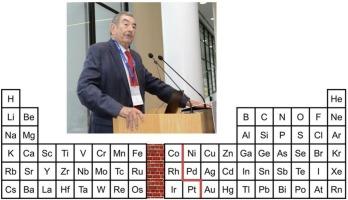Exploring the fascination of metal-sulfur bonds, vivid colors, and electron transfer through proteins: A tribute to Harry B. Gray
IF 3.2
2区 化学
Q2 BIOCHEMISTRY & MOLECULAR BIOLOGY
引用次数: 0
Abstract
The study of transition metals and their role in living matter has a long and distinguished history. This field, today referred to as Bioinorganic Chemistry, has evolved into a vibrant area of research. Progress is fueled by four main factors: (1) the use of high-tech spectroscopy to explore the structural and dynamic properties of molecules, (2) the molecular engineering and design of artificial enzymes, (3) the rapid determination of high-resolution structures of proteins and large protein complexes, and (4) the significant advancements in computational chemistry. First, I will take the reader on a brief journey “Meeting Harry B. Gray”. Hereafter, significant basic work in the laboratory and crucial key findings will be presented that have enhanced our understanding of the structural and functional features of notable metalloenzymes with unique catalytic sites: (i) the blue type-1 Cu center and the trinuclear O2 activating Cu cluster in ascorbate oxidase, (ii) the purple mixed-valent [Cu1.5+(CyS−)2Cu1.5+] copperA electron transfer center in nitrous oxide reductase and cytochrome c oxidase, (iii) intraprotein control of electron transfer rates by allosteric interactions within the green nitrite reductase cytochrome cd1, and (iv) active site structure and reaction mechanism of the red pentaheme cytochrome c nitrite reductase based on crystallographic identification of reaction intermediates and density functional calculations. This topic is particularly apt for honoring Harry B. Gray, who has made numerous seminal contributions to modern Inorganic Chemistry, especially as we celebrate his 90th birthday.

探索金属硫键的魅力,鲜艳的颜色,以及通过蛋白质的电子转移:致敬哈里·b·格雷
过渡金属及其在生物物质中的作用的研究有着悠久而杰出的历史。这个领域,今天被称为生物无机化学,已经发展成为一个充满活力的研究领域。推动这一进展的主要因素有四个:(1)利用高科技光谱学来探索分子的结构和动态特性;(2)人工酶的分子工程和设计;(3)快速测定蛋白质和大型蛋白质复合物的高分辨率结构;(4)计算化学的重大进展。首先,我将带读者踏上一段“遇见哈利·b·格雷”的简短旅程。接下来,我们将介绍实验室中重要的基础工作和重要的关键发现,这些发现增强了我们对具有独特催化位点的重要金属酶的结构和功能特征的理解:(1)抗坏血酸氧化酶中的蓝色1型铜中心和激活铜簇的三核O2,(2)氧化亚氮还原酶和细胞色素c氧化酶中的紫色混合价[Cu1.5+(CyS−)2Cu1.5+]铜a电子转移中心,(3)绿色亚硝酸盐还原酶细胞色素cd1内的变容相互作用对电子转移速率的蛋白内控制,(4)基于反应中间体的晶体学鉴定和密度泛函计算,得到红色五血红素细胞色素c亚硝酸盐还原酶的活性位点结构和反应机理。这个话题特别适合纪念哈利·b·格雷,他对现代无机化学做出了许多开创性的贡献,尤其是在我们庆祝他90岁生日的时候。
本文章由计算机程序翻译,如有差异,请以英文原文为准。
求助全文
约1分钟内获得全文
求助全文
来源期刊

Journal of Inorganic Biochemistry
生物-生化与分子生物学
CiteScore
7.00
自引率
10.30%
发文量
336
审稿时长
41 days
期刊介绍:
The Journal of Inorganic Biochemistry is an established international forum for research in all aspects of Biological Inorganic Chemistry. Original papers of a high scientific level are published in the form of Articles (full length papers), Short Communications, Focused Reviews and Bioinorganic Methods. Topics include: the chemistry, structure and function of metalloenzymes; the interaction of inorganic ions and molecules with proteins and nucleic acids; the synthesis and properties of coordination complexes of biological interest including both structural and functional model systems; the function of metal- containing systems in the regulation of gene expression; the role of metals in medicine; the application of spectroscopic methods to determine the structure of metallobiomolecules; the preparation and characterization of metal-based biomaterials; and related systems. The emphasis of the Journal is on the structure and mechanism of action of metallobiomolecules.
 求助内容:
求助内容: 应助结果提醒方式:
应助结果提醒方式:


